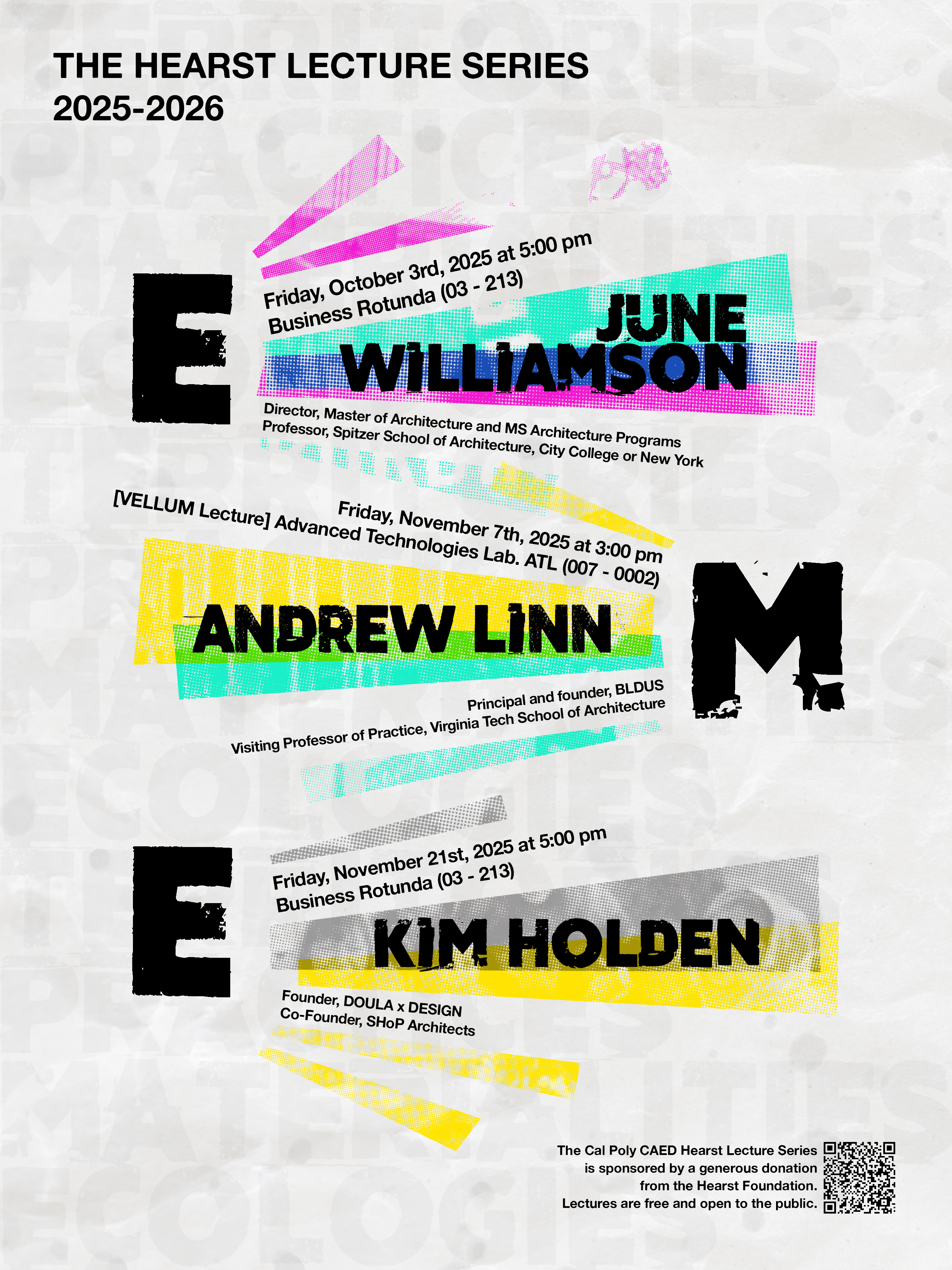Cal Poly Architecture Students Take First Place, Honorable Mentions in National Steel Design Competition
SAN LUIS OBISPO — Cal Poly architecture students took first place and two honorable mentions in a national steel design competition with projects for an extensive transit center in Los Angeles, a new neighborhood center in Detroit, and a transportation system for the future.
The students competed in the 2018-19 annual Steel Design Student Competition, administered by the Association of Collegiate Schools of Architecture (ACSA) and sponsored by the American Institute of Steel Construction (AISC). All three competed in the same category, which challenged them to design a transportation center with components such as international, regional, and local train stations, bus terminals, ports, airports and spaceports in a major urban location.
Third-year architecture student Curt Budd, of University Place, Washington, won first place with his entry, “Interlace,” an intermodal transit center at Union Station in Los Angeles that aimed to blur the line between transit and social infrastructure. He included hyperloop, highspeed rail, metro and bus systems in addition to extensive community-based programs.
“The word interlace is a verb defined as the act of uniting,” Budd wrote in his project description. “This has obvious connections to transportation, which in today’s world joins people and economies that would otherwise be separated by thousands of miles. With this thought in mind I began to ask what architecture can do to unite people on a variety of scales ranging from regional to local.”
Architecture students Andrew Swaim, of Livermore, California, and Scott L’Esperance of Castle Rock, Colorado (near Denver) won honorable mentions for their projects, “Arch 2082” and “Interchange,” respectively. Swaim’s project looks deep into the future of infrastructure and humanity and proposes a “new era of transportation,” with hyperloops and flying cars as commonplace.
L’Esperance’s design explores the use of diverse steel conditions to create a new neighborhood center that replaces an urban freeway in Detroit, while providing top-notch transit to local and national destinations.
Their winning entries will be on display next year at two national professional conferences held in California.
“Our third-year architecture students once again excelled in designing top award-winning projects for this competition,” said architecture faculty member Margarida Yin, who served as the students’ advisor on their projects. “As a class they inspired each other to create their most innovative work. The steel design challenge was complex, requiring the integration of a long-span steel structure to house a cohesive transit system.”
In his project description, Budd said his design aims to be a vibrant center of human activity, despite the fact travelers may spend little time there.
In addition to the transit components, Budd designed space for community-based programs including retail, dining, urban farming, office sharing and gallery spaces. The competition jurors noted that Budd’s project had “a compelling intervention into the urban fabric of Los Angeles, bringing the community into the building.”
Overall, the jury selected six prizewinners and 10 honorable mentions across two categories out of the more than 500 entries from Canada, Mexico and the United States. Budd received the top prize of $2,500 for his project.
The prize-winning projects will be on view next year at the 2020 ACSA Annual Meeting in San Diego, California, from March 12-14, and the American Institute of Architects 2020 Convention in Los Angeles from May 14-16. To view the winning projects, visit https://www.acsa-arch.org/competitions/2018-2019-steel-competition/winners/.
About ASCA/AISC Steel Design Competition
The American Institute of Steel Construction (AISC) and the Association of Collegiate Schools of Architecture (ACSA) 2019 Steel Design Student Competition recognizes 12 exceptional projects in two categories that explore a variety of design issues related to the use of steel in design and construction. The program is intended to challenge students, working individually or in teams, to explore a variety of design issues related to the use of steel in design and construction. Steel must be used as the primary structural material and contain at least one space that requires long-span steel structure, with special emphasis placed on innovation in steel design. To learn more, visit
About Cal Poly’s College of Architecture and Environmental Design
With more than 1,900 students, Cal Poly’s acclaimed College of Architecture and Environmental Design (CAED) offers a unique blend of eight degree programs in five closely related departments: architectural engineering, architecture, city and regional planning, construction management, and landscape architecture. For more than 70 years, the CAED programs and 16,000 alumni have been a positive influence on the forces that shape the planning, design and construction worlds. Learn more at www.caed.calpoly.edu.
Photo information- Left: Cal Poly architecture student Curt Budd won first place with his entry, “Interlace,” Right: an intermodal transit center located at Union station in Los Angeles. Click on images for enlarged version.
# # #





